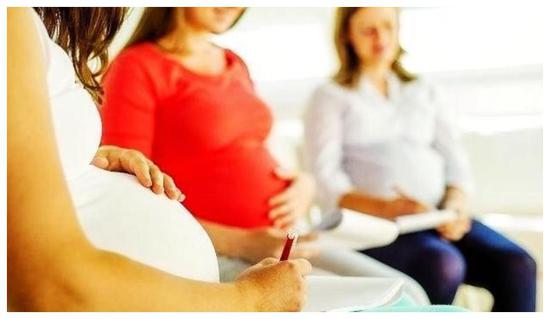 Network diagram
Network diagram With the liberalization of the two child policy, the number of elderly pregnant women is gradually increasing. Those pregnant women over 35 years old are often asked when doing prenatal examinations: they can do amniocentesis or non-invasive DNA tests. Which do you want to do? At this time, pregnant women are often confused.
What is the role of non-invasive DNA examination and amniocentesis, and how should we choose? There is a large number of obstetric clinics, and doctors cannot spend a lot of time to make a detailed explanation. They can only make a few brief introductions. It is also difficult for pregnant women to understand comprehensively and make correct choices in a hurry.
"Noninvasive DNA examination and amniocentesis are both means to screen whether the fetus has chromosome problems." Huang Dan, the obstetrician in charge of Beijing Shunyi Women and Children's Hospital, introduced that non-invasive DNA examination is safer, cheaper and more convenient, but amniocentesis is more accurate and comprehensive. After a relatively comprehensive understanding, it is also necessary to make a comprehensive judgment and selection according to their respective economic conditions, expectations for the fetus, and the qualifications of the prenatal examination unit.
After the age of 35, the quality of female eggs began to decline, and the probability of fetal malformation gradually increased after pregnancy. Therefore, more attention and accuracy should be paid to screening whether the fetus has chromosome problems.
Huang Dan pointed out that the B ultrasound examination of teratology is only to observe the appearance of the fetus, to see whether there is any abnormality in the organs that have grown up, or whether there are some organs that have not yet grown up, which can only reflect structural abnormalities. However, the current B ultrasound can also reflect some functional conditions, especially the heart, due to the addition of blood flow signal monitoring, but it is still very limited.
Some people with chromosome problems may not have obvious abnormalities with normal people in appearance, but there are problems in intelligence or fertility. Therefore, it is necessary to combine chromosome examination and B ultrasound examination to screen out the problem fetus as far as possible.
What are the differences between non-invasive DNA testing and amniocentesis?
According to Huang Dan, the two inspections have advantages and disadvantages in operation methods, inspection opportunities, inspection contents, prices, detection rates and other aspects.
1. Operation method
Noninvasive DNA testing is performed by drawing blood, while amniocentesis is performed by drawing amniotic fluid from pregnant women for culture. Because of the need to draw amniotic fluid, it is possible to cause infection, abortion and even damage to the fetus. The incidence of complications is generally about 0.5%. Usually, amniocentesis will be carried out under the monitoring of B ultrasound, and the incidence of adverse events is very low, but not equal to 0.
2. Inspection opportunity
Noninvasive DNA examination was performed at 12-22 weeks of gestation; Amniocentesis was performed at 16-24 weeks of gestation.
Huang Dan explained that the upper limit of time is not because the test cannot be performed after this pregnancy week, but because the larger the pregnancy week, the more difficult it will be to deal with problems after screening.
3. Inspection content
The non-invasive DNA examination only screens the three pairs of chromosomes 21, 18 and 13, because the problems of these three pairs of chromosomes are the most common chromosomal problems at present. Sheep wear is used to screen 23 pairs (i.e. all) of chromosomes. Noninvasive DNA can only be used as a means of screening, while sheep clothing is a means of diagnosis, that is, the gold standard.
4. Screening price
Non invasive DNA examination: about 2000 yuan - 3000 yuan; Amniocentesis: 2500 yuan to 7500 yuan.
The price will vary from region to region, and will be adjusted according to the health and economic conditions of each region and the increase or decrease of testing items. The specific price standard issued by the local hospital shall prevail.
5. Detection rate
Both are high on the whole. The probability of finding a problem fetus by non-invasive DNA examination is 95% - 99%; Amniocentesis is 99%.
6. Others
For pregnant women with problems screened out by non-invasive DNA examination, amniocentesis is still needed in the next step to confirm the diagnosis.
For twin pregnancy, if there is amniotic membrane segmentation between twin fetuses, amniocentesis is feasible, because under the positioning of B ultrasound, it can be very clear which fetus the amniotic fluid belongs to. However, non-invasive DNA examination cannot distinguish which fetus the fetal cells isolated from the mother's blood belong to. So if one fetus has DNA problems and the other does not, it is impossible to know which fetus has problems.
Amniocentesis has higher requirements for medical staff and hospitals, so there are relatively fewer hospitals qualified for amniocentesis.
Beijing News reporter Wang Kala
Edited by Yue Qingxiu, proofread by Guo Li



